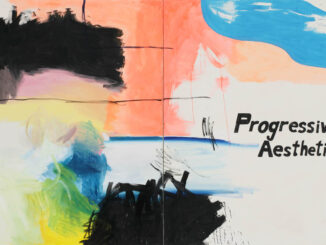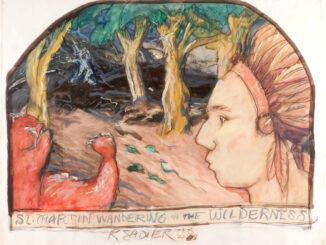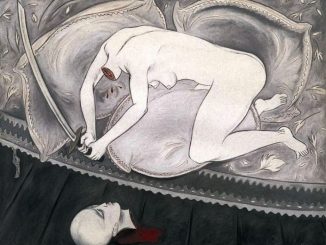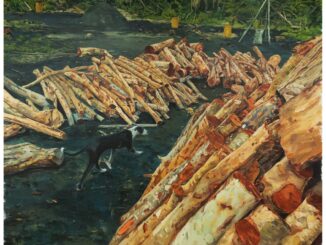 Art is an imprint of human life, of human creation. One of the focuses of anthropology is the effect of these captured moments in images on the people of their time. I have come to think that artists and anthropologists work hand in hand in the most indirect way as one produces the work that will be studied by the other as a reflection of what once was. Jose Bedia, one of the most prevalent Cuban artists of our time, seems to have taken these two professions over the years to produce the substance behind his original pieces. Having conducted ethnographies of his own, the work of Bedia displayed this month at Lyle O. Reitzel Gallery in a loosely tied solo show called Ritual of Passage, depicts messages of war, man vs. machine, and human behavior. In a 2001 LatinArt.com interview by Bill Kelley Jr. Bedia said, “Yes, well my interest is basically that, an interest in the cultures of North America, Cuba and Mexico where I have spent much time…I try to bring out these relations among men, animals and men, men and machines, the world and man.”
Art is an imprint of human life, of human creation. One of the focuses of anthropology is the effect of these captured moments in images on the people of their time. I have come to think that artists and anthropologists work hand in hand in the most indirect way as one produces the work that will be studied by the other as a reflection of what once was. Jose Bedia, one of the most prevalent Cuban artists of our time, seems to have taken these two professions over the years to produce the substance behind his original pieces. Having conducted ethnographies of his own, the work of Bedia displayed this month at Lyle O. Reitzel Gallery in a loosely tied solo show called Ritual of Passage, depicts messages of war, man vs. machine, and human behavior. In a 2001 LatinArt.com interview by Bill Kelley Jr. Bedia said, “Yes, well my interest is basically that, an interest in the cultures of North America, Cuba and Mexico where I have spent much time…I try to bring out these relations among men, animals and men, men and machines, the world and man.”
Bedia’s Ritual of Passage is a collection of pieces that reflect his particular technique as well as some new ventures. The first hall of the gallery houses large format mixed media creations that evoke feelings of fear and the obscurity of war. A darker palette than usual of grey, white, black, and hints of bright red are definitely something new and unexpected from Bedia; a piece called Cuando no queda mas lugar of one animal slaughtering another especially emphasizes the dead-end of a pointless war.
In the next hall of the gallery, works true to Bedia’s more traditional and vibrant color palette channel a familiar concept of man vs. machine; though this is not a concept unique to Bedia as it has been almost exhaustedly explored, silhouettes of sleek and fast automobiles being dominated by Bedia’s Deer give this take on the notion a freshness perhaps only he could render. Finally, in another larger space of the gallery, a series of works closer to Bedia’s traditional approach with bright colors on lighter backgrounds give the Bedia connoisseurs exactly what they have come to expect from the artist. Pieces like A Contracorriente and La edad de Oro suggest a struggle towards a future we dare dream of. La edad de Oro (The Golden Age) in particular is just that, an expression of Bedia’s vision of how a perfect world would alter the behavior of the living, as human and animal silhouettes are shown making love throughout golden mountain ranges and abundant nature scenes.
Bedia’s Ritual of Passage could be seen as an exciting transitional solo show into a new Bedia era. Composed of impressive previews of his versatility, Ritual of Passage is on display at Lyle O. Reitzel Gallery through January 30th, 2010.







Be the first to comment